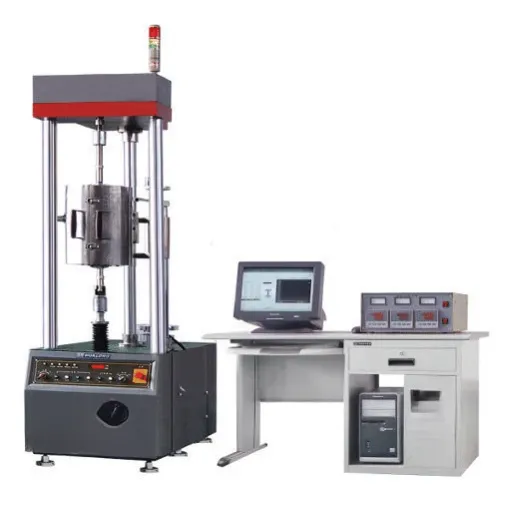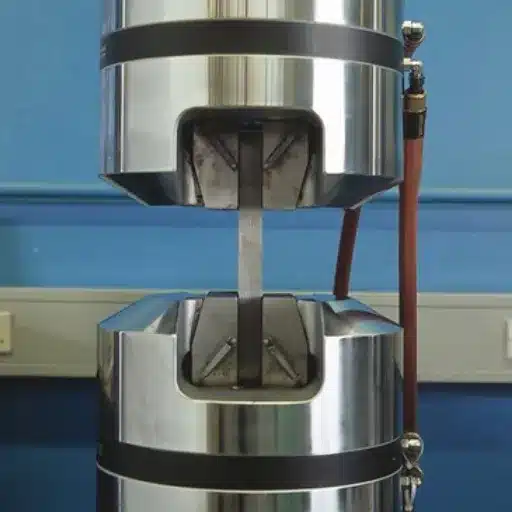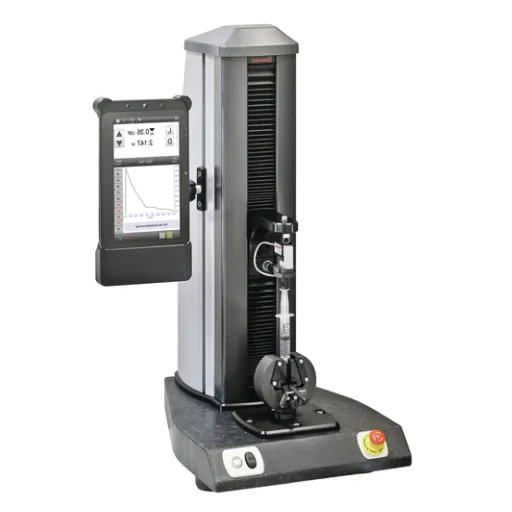Creep and stress rupture testing are crucial long-duration testing procedures employed to investigate long-term performance and the reliability of materials under extreme conditions. These tests are of paramount importance for industries such as aerospace, power generation, or manufacturing, where materials need to withstand hours of exertion concerning stress, heat, or pressure. The intent of this blog is to enlighten readers on the fundamentals of these testing methods to discover how engineers and researchers use them to predict material behavior and avoid catastrophic failures, thereby ensuring safety and efficiency. The guide will provide valuable insights into the importance and applications of creep and stress rupture testing, whether you are a material scientist, engineer, or just someone curious about advanced material testing processes.
Creep and Stress Rupture Testing Overview

Definition and Importance of Creep Testing
Creep testing varies the material’s familiar tendency to irreversibly deform over time under constant stress, mainly at elevated temperatures. This is an important factor in determining how materials behave under loads applied for extended times, particularly in applications that involve power generation plants, aircrafts, and fabrication environments with high temperatures and stresses. Study of creep always enables scientists and engineers to execute long-term failure analyses on materials and allows them to confirm if the barrier they are dealing with will stand safety and performance norms.
Primary Creep
Strain rate decreases as the material adjusts to applied load
Secondary Creep
Relatively steady deformation rate over time
Tertiary Creep
Accelerated deformation leading to material failure
Creep tests recognize three phases of deformation, namely, primary (where the strain rate decreases), secondary (with a relatively steady rate), and tertiary (where the speed of deformation accelerates to failure). These stages give valuable insight into the lifespan of the material and the manner in which it behaves under certain conditions of use. Such data are used by engineers to select materials for components such as turbine blades, pipelines, and structural supports, thereby preventing premature failures and ensuring the reliability of critical systems.
Another reason why creep testing stands important is in preparing for stress rupture tests that deal with a material’s ability to withstand prolonged stresses and heat before it finally breaks apart. In this way, the two suit spectacularly for industries in which materials are supposed to stand in adverse working conditions over time. As such, the two test data, when combined, come in handy for engineers and researchers in nurturing safer and more efficient systems, optimizing material selection, and ensuring the ultimate dependence of applications that require performance under shouting adverse conditions.
Overview of Stress Rupture Testing
Stress rupture testing, almost being another name for creep testing, is the determination of material behavior against a constant load or stress over prolonged time and high temperature. Such testing is necessary for the determination of material behavior in applications in which prolonged stress must be endured without failure. Actually, one should measure how much time it takes for a material to fail under certain test conditions-all this information, drawn from very specific conditions, provides insight into long-term reliability and performance of the material itself.
Key Insight: Creep and stress rupture tests can be termed complementary methods of study of time-dependent deformation and failure. The main concern of a creep test lies in the gradual deformation of the material under a load, often emphasizing the time frame for the material under stretch or shape alteration. Stress rupture testing emphasizes the final stage—when and how the material ultimately gives away after being subjected to stress for some time.
Together, these tests are used by engineers to ascertain the deformation behavior and limits of failure for materials under highly stressful conditions such as aerospace, energy production, and chemical processing industries.
The data gathered from stress rupture tests can help select materials and optimize designs. An understanding of the materials that can resist the most severe environmental conditions enables engineers to design safer and better systems. Stress rupture testing also provides information about how durable a material is and its resistance against elevated temperatures or pressure while learning about the entire life duration of the material under extreme working conditions. Such information is useful for ensuring performance and reliability under rigorous applications, reducing the chance of failures, thereby upgrading safety measures.
Applications in Various Industries
Aerospace Industry
Critical for turbine blades, engine parts, and structural elements that must withstand high temperatures, mechanical stresses, and time-lapse usage
Energy Sector
Essential for steam pipes, pressure vessels, and boiler tubes in power plants and renewable energy systems
Automotive & Manufacturing
Used to evaluate reliability of engines, exhaust systems, and industrial machinery components
Creep and stress-rupture testing are crucial industries where materials are subjected to extreme conditions for long periods. These industries, for example, include aerospace, which racks up heavy checklists on turbine blades, engine parts, and structural elements. These materials are required to coagulate high temperatures, mechanical stresses, and time-lapse usage, and testing ensures that these components meet stringent safety and performance requirements.
The energy sector is also among the most important beneficiaries of creep and stress-rupture testing. In power plants and renewable energy systems, components like steam pipes, pressure vessels, and boiler tubes all undergo very high temperatures and pressures. Creep tests ensure that the materials maintain their structural integrity and performance during their operational lives, thereby reducing the risk of expensive failures that can disrupt operations.
Similarly, the automotive and manufacturing industries perform these tests to weigh reliability regarding engines, exhaust systems, or some industrial machinery. With emerging demands for fuel economy and weight, manufacturers have depended on creep and stress-rupture testing to ensure durability of advanced alloys and composite materials employed in trade techniques and end products, and to ensure safety.
Principles of Creep and Stress Rupture
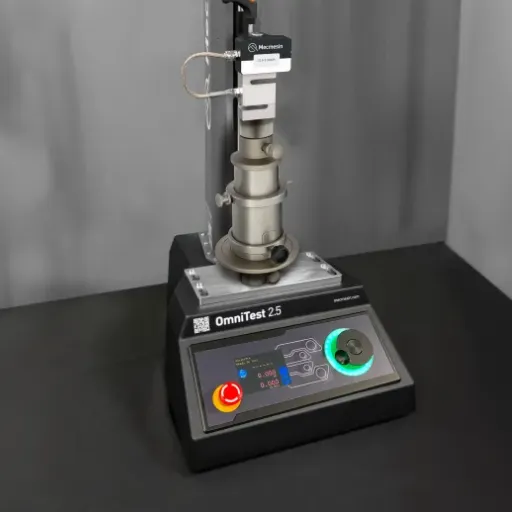
Understanding Creep Mechanisms
Creep is the stretch or deformation of a material under constant stress over a period of time, usually at elevated temperatures. The creep phenomenon includes the action of three stages-primary, secondary, and tertiary. In the initial stage, deformation slows down as the structure adjusts to the applied load. Secondary creep (or steady-state creep) exhibits constant strain rate, whereas tertiary creep presents accelerated straining to rupture of the material. Knowledge of these three mechanisms would let one know how the materials will respond under long stress and high-temperature conditions.
Stress-rupture testing provides a complementary approach to creep testing; it measures the time a material withstands the application of a given load at a fixed temperature before actually failing. This testing is vital in industries such as aerospace, power generation, and manufacturing, where materials are subjected to severe conditions. Results of stress-rupture tests are used to provide data necessary for the design of components that have very high reliability requirements and operational safety under conditions that involve thermal and mechanical stresses (for instance, turbine blades or engine components).
The more creep and stress-rupture tests gives engineers and researchers an opportunity to foresee the duration and performance of materials within an aggressive environment. These tests are instrumental in developing a more advanced generation of alloys and composites that are used in front-line technologies. Under stress and its consequences, when the behavior of materials is clear to manufacturers, they can well decide on the materials used, designs, and safety standards such that end products will perform reliably in the field.
Stages of the Creep Process
Generally, the creep process is divided into three stages, which describe the behavior of materials under prolonged stress and high temperature:
| Stage | Characteristics | Behavior |
|---|---|---|
| Primary Creep | Initial stage with high deformation rate that steadily decreases with time | Strain hardening as material’s internal structure readjusts to applied stress and temperature |
| Secondary (Steady-State) Creep | Deformation occurs at steady, nearly constant rate | Longest and most vital stage that often governs entire lifespan of material under given conditions |
| Tertiary Creep | Material approaches point of failure with rapid rate increase | Internal damage such as cracks and voids develop, terminating in rupture |
Rupture Properties and Their Significance
Rupture properties prove indispensable for grasping the long-term exposure of materials to stress and high temperature, especially under creep conditions. Stress-rupture testing is the main method by which the behavior of materials with the passing of time under demanding environments is analyzed and projected as to life span. Working engineers gain the most important rupture properties-tensile or rupture strength and time-to-failure-from these tests for judging the applicability of a material under certain conditions.
Stress-rupture testing subjects a material to a constant stress at a given temperature and records the failure time of the sample. The behavior of this material is checked to decide on critical limits, and under such conditions, materials can be selected for power plants, aerospace, or industrial equipment where materials must withstand long hours of life under stress and temperature. Stress vs. time-to-rupture data is thus plotted on log-log paper to allow for exact extrapolation into the future.
A proper understanding of rupture properties is imperative in the prevention of catastrophic failure in the components working in environments of aggressive stress and temperature. Through the proper analysis of such properties, engineers are able to design safer and more efficient systems and chose the most cost-effective materials, while also providing maintenance schedules for risk reduction. This upholds reliability and service life of critical components and thus optimizes their performance in essential applications.
Testing Methodologies and Standards
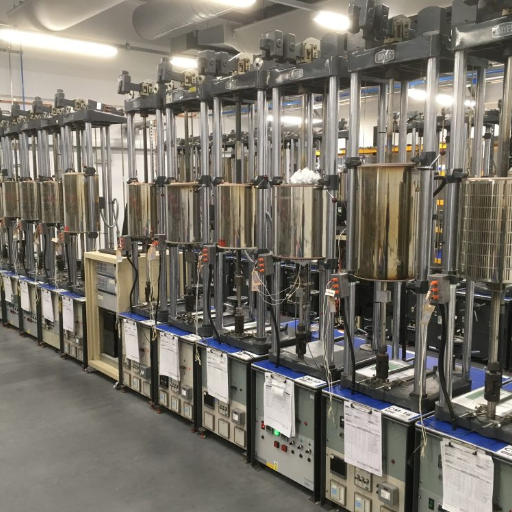
Standard Test Methods for Conducting Creep Tests
The field of materials engineering sees creep and stress-rupture testing as vital in assessing the long-term viability of materials subjected to continuous stress at elevated temperatures. The two are complementary in that one determines how the material deforms with time and under what conditions it expires, while the other determines the breaking time under applied load at high temperature. The usual practice is to place a test specimen under a constant load in a test chamber with a given temperature and to record the increase in length or strain until the specified test time elapses.
There are generally three distinct stages in creep testing—the primary stage, secondary stage, and tertiary stage. In the primary stage, when deformation takes place at a decreasing rate, the material is trying to adjust to the applied stress; in the secondary stage (steady-state creep), the rate of strain is constant and frequently represents the operating life of the material; and, in the tertiary stage, there is an accelerated deformation approach towards rupture of the material. Stress-rupture tests are primarily concerned with the conditions and time under which a specimen finally fails, and they provide crucial information for determining the safe operating parameters.
Uniform data collection and reliability can be ensured under standardized testing methods such as ASTM E139 and ISO 204. These standards lay down the specifics of experimental procedures to maintain uniformity in test parameters, such as temperature, specimen alignment, and load application. Other instruments-aided by an extensometer and a strain gauge-provide measurements with high precision so that an engineer can analyze materials’ behavior and performance, predict the service life limit set parameters, and safety requirements, under critical applications.
Stress-Rupture Test Methods for Metallic Materials
Performing stress-rupture testing is paramount to understanding the behavior of a material when subjected to prolonged loading conditions at elevated temperatures. The ultimate aim here is to measure time-lapse to failure of the specimen under constant load, so that engineers could determine long-term strength and durability of a material. This information is especially crucial in areas where materials can be subjected to prolonged stress under extreme working conditions: in aerospace, power generation, and chemical processing.
Stress-rupture tests demand firm maintenance of specific testing conditions, such as specimen geometry, alignment, timing of loading, and uniform temperature, among other aspects, to ensure the results are technically correct. The results are given in form of stress-rupture curves, in which the ordinate represents stress and the abscissa corresponds to time to failure. These data sets allow engineers to design components whose requirements are stringent regarding performance and safety, thus preventing catastrophic failure in demanding environments. Through the rigorous testing of creep and stress rupture, metals can be assessed for their suitability in those high stress and high temperature operating conditions.
Comparison of Testing Methodologies
| Aspect | Creep Testing | Stress-Rupture Testing |
|---|---|---|
| Primary Focus | Measurement of deformation over time under constant load | Time to failure under constant stress at elevated temperature |
| Key Applications | Understanding slow deformation trends and maintenance planning | Determining maximum allowable working limits and failure points |
| Data Output | Strain rate and deformation characteristics | Time-to-failure and ultimate material lifespan |
| Industry Use | Power plants, aerospace components, industrial machinery | Turbine blades, pressure vessels, high-stress applications |
Creep and stress-rupture testing, while serving to test the performance of materials in the long-standing stress conditions and at elevated temperatures, are complementary to one another. Creep testing is primarily concerned with the measurement of instantaneous deformation of a material-time deformation under constant load or stress-application for rather a long time. This test can provide information on how a material is subjected to slow deformation, permitting the engineers to predict the long-term behavior under actual working conditions. The usefulness of creep testing is emphasized where sustained loads are important, such as in power plants, aerospace components, or industrial machinery.
Both are important in material selection and design of the components, but they differ in the extent of their results. Creep tests essentially cater to understanding the slow deformation-rate trends and to carrying out maintenance-planning purposes. On the other hand, stress-rupture testing provides the information necessary for specifying the maximum allowable working limits and failure points. Both methods, thus, have to be conducted to check whether materials will be able to withstand certain high stresses and temperatures while remaining sure to be safe and reliable.
Tools and Equipment Used in Testing

Essential Equipment for Creep Testing
Creep tests require specialized equipment for achieving precise measurement and reliable result. The primary one being a creep testing machine. This is used for applying a uniform load or stress on a specimen for a long time while maintaining a controlled temperature. These machines have sophisticated temperature-control units that might be furnaces or heating elements, replicating high-temperature service from the real-life standpoint.
Extensometer is an equally important piece of equipment for measuring elongation or deformation of the specimen throughout the testing-period increments. It should be of high resolution to monitor small incremental length changes in the test piece, as those are the crucial data in determining creep rates and characterizing behavior of specimens under stress.
Time-to-failure monitoring equipment is necessarily involved in stress-rupture testing; such machines record the stress, temperature, and time data to ascertain the exact time at which failure of the material occurs. Data acquisition systems are commonly integrated to register and analyze these parameters in real time while providing a more comprehensive and detailed record of the test results. Together, these form the basis for analyzing the performance and durability of a material under demanding conditions.
Instrumentation for Stress Rupture Tests
A stress rupture testing machine is highly specialized and designed to monitor and control important parameters such as time, temperature, and stress. A load frame with precision-controlled loading heads applies a set force on the test material. This results in uniform stress through the test duration, which is a prime consideration for an accurate test. Load cells may be employed to precisely measure and control the applied force.
The control of temperature is an essential aspect. Furnaces capable of finely controlling temperature surround the test specimen to keep the material temperature uniform and constant for long testing periods. Thermocouples are mounted so as to read the temperature at the material surface itself. This ensures minimal thermal transients. Accurate temperature measurement is of critical importance since creep and stress rupture behavior are highly temperature dependent.
Such systems are integral for keeping a constant check on the stress, temperature, extension, etc., and recording these with respect to time. These systems provide researchers with a plethora of data necessary to comprehend the behavior of any material. Modern data acquisition systems probably also include software which can analyze trends and may even have the capability to directly plot the graphs from collected data, saving the test engineer valuable time in interpreting the test results. These instruments taken into unison provide the reliability and precision required for assessing the long-term performance and durability of materials subjected to high stresses and extreme temperature conditions.
Advanced Testing Technologies
Similar to the mechanical behavior of the sliding friction middle, creep behavior involves the gradual deformation of a solid material under stress, operating at high temperature usually. Therefore, the creep test is paramount for all materials that service under high temperature and pressure limits, sometimes close to their melting points, with such high amplitude of stress that creep deformation is highly eminent within a short period of time, as in the aerospace, power generation industries, and automobile manufacturing sectors. Whereas with creep testing, the emphasis is placed on the deformation of the material with time, in stress-rupture testing, the time of rupture or failure of the material under a constant load and temperature is determined. Both tests tell us whether the materials can stand a long time or not and offer an idea about their long-term behavior while in service.
During a creep test, a constant stress is applied to a material sample at a predetermined temperature. The deformation with a given time is recorded to plot a creep curve, which has three stages: primary or transient creep, secondary or steady-state creep, and tertiary creep which proceeds before failure. The data obtained from this test is an engineer’s prediction of a material’s behavior under similar conditions inside the realm of practicality, where reliability and safety become requirements.
Stress-rupture testing entails the application of a constant load until the rupture of a material. The test enables finding the ultimate life expectancy of a material under definite conditions. Stress-rupture-time curves are used by an engineer to decide upon materials that will be able to endure high stress and temperature for an extended period of time. Together, creep testing and stress-rupture testing become essential tools for choosing and designing materials that can fulfill stringent requirements of performance.
Real-World Applications and Case Studies
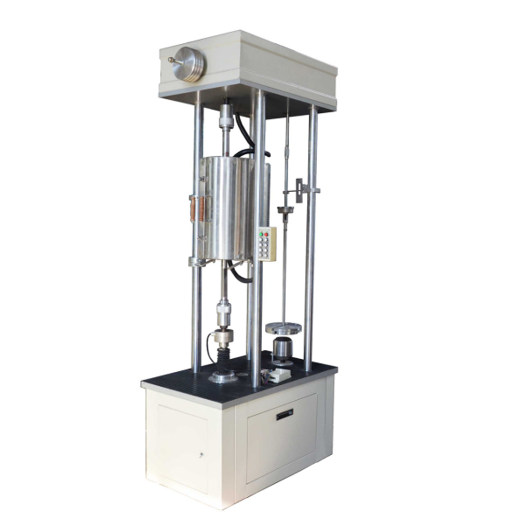
Case Studies in Aerospace Materials
Creep and stress-rupture testing are vital for aerospace materials selection and validation. Turbine blades in jet engines work under very high temperatures and stresses and hence are generally required to use materials having very high creep resistance. Much study has gone into and use of nickel-based superalloys because they retain strength and structural integrity for an extended period of time at elevated service temperatures. Such materials are tested rigorously under simulated service environments to determine if they meet the design requirements for durability and performance.
Another key application has been in the design of space vehicle components such as rocket nozzles and heat shields. Carbon-carbon composites are the materials being tested for creep and stress rupture to check their long-term behavior as they face the combined stresses of high temperature and pressure during launch and re-entry. Such data is critical for engineers so that they may adjust the material formulation or coatings to best extend the life of these components with reliable assurance.
One case study involves the Concorde aircraft where aluminum alloys are tested for both creep and stress-rupture under long thermal cycling conditions. The tests showed that specific heat treatments were needed to enhance the alloy’s retention of strength at high temperature without compromising weight. Thus, such testing helps not only in selecting materials but also in enabling the development of improvements that are suited to very particular aerospace problems.
Power Generation Sector Applications
Creep and stress-rupture testing are essential in the power generation sector due to the extreme environments involved in operations. Components such as steam turbines, gas turbines, and boilers are subjected to high temperatures and sustained stress, requiring materials that can maintain stability and performance over long periods. By conducting these tests, engineers can evaluate how materials deform under prolonged thermal and mechanical loads, ensuring they meet the stringent reliability and durability standards of the industry.
The results of creep and stress-rupture testing help identify materials with optimal thermal resistance and mechanical properties for power generation applications. For instance, advanced alloys and superalloys are often selected because of their ability to retain strength and resist deformation in high-temperature settings. This testing is crucial in extending the service life of components and preventing failures, which could lead to costly downtimes and safety challenges in large-scale power plants.
Additionally, these tests drive innovation in material science by guiding the development of improved materials. Engineers analyze the detailed performance data from creep and stress-rupture testing to design new alloy compositions and heat treatments. This ensures that the power generation sector continues to adapt to rising demands for efficiency, greener technologies, and reduced maintenance costs, making the tests a foundational element in both current operations and future advancements.
Manufacturing and Material Performance Insights
Creep and stress-rupture tests are conducted to examine the long-term performance of a material subjected to mechanical stress and elevated temperature. By replicating operating mechanical conditions, manufacturers can predict the manner in which a material will deform or undergo failure over an extended period of time. These testing methodologies provide information on the rate of deformation or time to failure, which basically serves as data on the durability of the materials, especially in the aerospace, power, and petrochemical industries.
During creep testing, it is possible to use an installed creep machine to determine if a material will be able to withstand structural integrity when put under high stress over a lengthy amount of time. This is important information to ensure that components such as turbine blades, pressure vessels, and boilers can be kept safe and sound for long. These testing results are used by the manufacturers to further develop their processing techniques, heat treatments, and selection of the most suitable alloys for specific applications.
The stress-rupture test complements creep analysis in that it deals with the question of how long a material can withstand a constant load before it ends in failure. These tests are very useful where long exposure to high temperature and stresses are unavoidable. These tests together permit the manufacturers to ensure systems that are safer to operate, require less maintenance, and perform better-aiding in innovation and reliability in high-performance applications. These tests set the stage for creating resilient materials that can face up to the contemporary engineering challenges.
Frequently Asked Questions (FAQ)
Q: What is stress rupture testing and creep testing?
A: Stress rupture and creep testing are mechanical tests designed with the objective of assessing the long-term strength and perhaps deformation behavior of materials under constant load or stress over time. These tests are used to determine the creep and rupture characteristics of metallic materials, which are the principal considerations in applications where temperature is high and stress time is long.
Q: How does a creep rupture test work?
A: In creep rupture testing, a constant load is applied to the test specimen at elevated temperatures. The specimen is monitored for deformation during the test, and when rupture occurs, the time to rupture is noted down. The data points are then used to plot the creep curve, describing the relationship between stress, strain, and time.
Q: What is the significance of the time to rupture in testing?
A: Time to rupture provides an idea whatsoever how long a material might withstand an applied stress before going through failure. The understanding of this parameter is vital by engineers to design equipment that does not fail under working conditions, which would endanger lives and make useful applications unreliable.
Q: What materials are generally considered for creep and stress rupture tests?
A: Creep and stress rupture tests are generally considered for testing metallic types, mainly in connection with applications at high temperatures. The metal in question should be sufficiently strong in creep resistance against deformation.
Q: What apparatuses are utilized to determine the creep rupture behavior?
A: The apparatuses utilized for the testing of creep rupture may be special test frames and machines for applying constant load or stress at a given temperature. These machines have sensors that record the deformation of the sample with time and provide the readings of creep during the entire test.
Q: What are the stages of creep during testing?
A: The stages of creep observed during testing are primary creep, in which creep strain increases rapidly at first; secondary creep, characterized by a steady state creep rate; and finally, tertiary creep, where deformation accelerates until rupture.
Q: How do temperature and stress govern the creep behavior?
A: Temperature and applied stress are the governing factors for creep behaviors. At higher temperatures, creep rates increase and time to rupture decreases. A good knowledge of these facts helps in predicting the performance of a material under specific working conditions.
Q: What is the standard test method to conduct creep tests?
A: A standard test method for creep testing serves as a guideline for the preparation of specimens, application of loads, and measurement of deformation against time. This method establishes uniformity so that results from different materials can be compared with accuracy.
Q: What is the effect of yield strength on creep and stress rupture testing?
A: Yield strength is one of the most significant characteristics that determine a material’s ability to withstand an applied stress without permanent deformation. Because materials with higher yield strengths are more resistant to long-term deformation and potential failure, they are usually preferable in creep and stress rupture tests.
References
-
AZoM – What is Creep and Stress Rupture Testing?
This article explains the evaluation of materials under prolonged stress and elevated temperatures. -
West Virginia University – Creep and Stress Rupture Properties
A detailed document discussing time-dependent deformation (creep) and stress rupture testing. -
Lab Testing – Stress Rupture and Creep Testing Lab
Information about testing labs that characterize materials under load and thermal stress conditions. -
ScienceDirect – Creep-Rupture Test Overview
An overview of creep-rupture tests, also known as stress-rupture or static fatigue tests.

